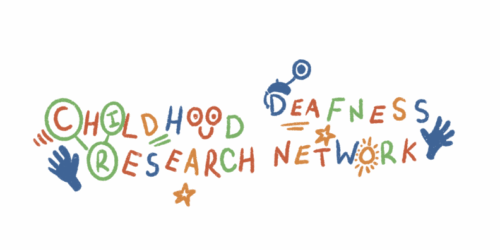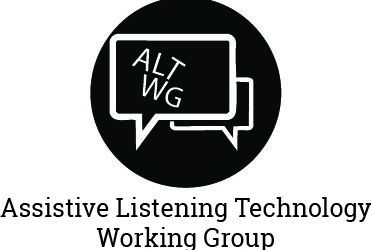4.5. Effects of poor acoustics
Ruth Crosby-Stewart, educational audiologist, shares this presentation ‘Effects of inadequate room acoustics‘
Stuart D Whyte FBSA, Senior (Re)habilitationist and Educational Audiologist, University of Southampton Auditory Implant Service shared this article submitted to Cochlear Implanted Children’s Support group (CICS).
“Reverberation and noise combine to make it difficult for children to understand speech. This article presents a summary of a recent review of past and current literature to promote the importance of good listening conditions for effective (re)habilitation.
External and internal background noise and the prolongation of reflected sound (reverberation) give rise to auditory processing challenges and greater cognitive effort. Reverberation is known to have a negative impact on speech intelligibility, particularly for children with special hearing or communication needs, and adversely affects word and sentence recognition.
Background
Hearing is a complex process that involves the functions of the ear and the brain. The brain interprets what we hear – we call this listening, or auditory processing. Listening skills develop with time and experience; sound associations are built up and our brain learns to use different levels of attention. Active listening uses the ability to focus on one sound to the exclusion of others. This ‘tuned in’ analytical listening may be associated with the left brain, the side used in language processing. We also use an intermediate or background kind of listening – the brain is ready to receive information and evaluate its significance, but our attention is probably directed elsewhere. Background listening is an important part of the listening process, but noise levels compete against this skill.
Reverberation time (RT) is an important way to describe the acoustic character of a space. Sound waves travel through the air until they meet a surface; the sound is then partly absorbed by the surface and partly reflected back into the room (reverberation). When we listen to sound, we hear not only an original direct sound source, but also its many complex reflections. Early reflections support speech intelligibility but late reflections (long RT) increase the reverberant noise levels and degrade speech. The level of the desired speech signal compared to everything else (noise) is described as the signal-to-noise ratio (SNR).
The brain is adept at sound pattern detection, but a minimum SNR is required so that speech can be separated from competing noise. For deaf children, the average level of the speech needs to be at least 15dB above that of the noise, i.e. +15dB SNR (Smaldino & Flexer, 2012), to as much as 20dB (BATOD, 2001).
Children do not have the same auditory perception abilities as adults. Children develop their sensitivity to the small differences in speech sounds (acoustic cues) as their attending and listening skills mature. Speech perception abilities within conditions of noise and reverberation may not reach adult-like levels of performance until the mid-to-late teenage years.
Key findings of the Review
- The acoustic quality of a learning space is crucial for children’s listening and development and cognitive development is a key predictor of outcomes following cochlear implantation (Bavin et al., 2018; Datta et al., 2020).
- Adverse listening conditions challenge children’s speech perception (Schiller et al., 2020).
- Cochlear implantation at a younger age has a significant impact on auditory perception in deaf children.
- A good acoustic environment supports the listening, learning and development of children. Timely intervention, appropriate amplification and the quantity and quality of talk all influence outcomes. Simple acoustic treatment of a learning space can support good listening experiences and the use of remote microphone technology is beneficial.
- Ashori (2020, p. 65) concluded that “speech intelligibility and auditory perception are two complex and multidimensional phenomena that require a unique rehabilitation program to further develop speaking skills.”
Classroom acoustics should be considered a critical variable in the educational achievement of children. We know that staff and children experience difficulties in learning settings with excessive noise and reverberation levels, so essential services for deaf children and measures to reduce the risks to health and achievement are vital.
There are many children whose needs can be met with a little adaptation by mainstream staff. However, there are others whose needs are highly complex, and their learning settings may require advice from a local Teacher of the Deaf or educational audiologist.
References
Ashori, M. (2020). Speech intelligibility and auditory perception of pre-school children with Hearing Aid, cochlear implant and Typical Hearing [Article]. J Otol, 15(2), 62-66.
Bavin, E. L., Sarant, J., Leigh, G., Prendergast, L., Busby, P., & Peterson, C. (2018). Children with cochlear implants in infancy: predictors of early vocabulary. Int J Lang Commun Disord, 53(4), 788-798.
Boothroyd, A. (2004). Room Acoustics and Speech Perception. Seminars in Hearing, 25(02), 155-166.
British Association of Teachers of the Deaf (2001). Classroom Acoustics – recommended standards. www.batod.org.uk
Datta, G., Durbin, K., Odell, A., Ramirez-Inscoe, J., & Twomey, T. (2020). The development and implementation of the Nottingham early cognitive and listening links (Early CaLL); A framework designed to support expectation counselling and to monitor the progress, post cochlear implantation, of deaf children with severe (SLD) and profound and multiple learning difficulties (PMLD) and associated complex needs. Cochlear Implants Int, 21(1), 18-34.
Schiller, I. S., Morsomme, D., Kob, M., & Remacle, A. (2020). Noise and a Speaker’s Impaired Voice Quality Disrupt Spoken Language Processing in School-Aged Children: Evidence From Performance and Response Time Measures. J Speech Lang Hear Res, 63(7), 2115-2131.
Smaldino, J. J., & Flexer, C. A. (2012). Handbook of acoustic accessibility : best practices for listening, learning, and literacy in the classroom. Thieme.
Useful reading
- NDCS Acoustic Toolkit publication (Archived publication – available with consent from the National Deaf Children’s Society))
- Introduction
- Noise Surveys (Schools)
- Reverberation Times (Schools)
- Speech Intelligibility (Schools)
- Assistive Devices (Schools)
- Noise Surveys (Specialists)
- Reverberation Times (Specialists)
- Appendix A How to create a graph
- Appendix B BB93 Performance standards
- Appendix C BRE Absorption coefficients
- Appendix D1 LIFE-UK IHP
Next page in section 4
4.7 Soundlevel meters (under development)
Previous pages in section 4
4.1 Characteristics of sound sources and rooms
4.2 Room acoustics listening and speech intelligibility
4.3 Acoustic properties of a room
4.4 Acoustic standards legislation and guidance
Other sections
- Section 1 Anatomy and physiology of the ear
- Section 2 Aetiology and types of deafness
- Section 3 Auditory perception and hearing testing
- Section 5 Listening skills and functional hearing
- Section 6 Hearing technologies






